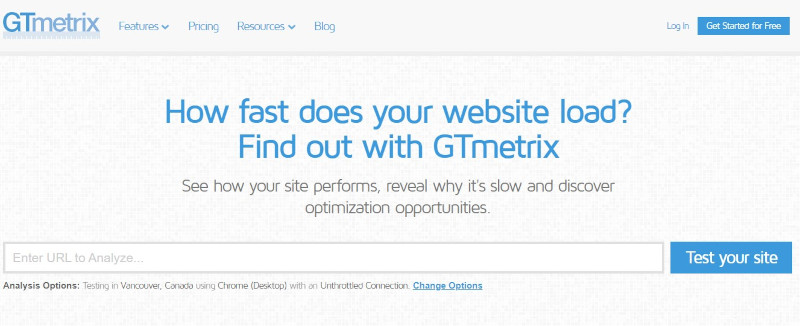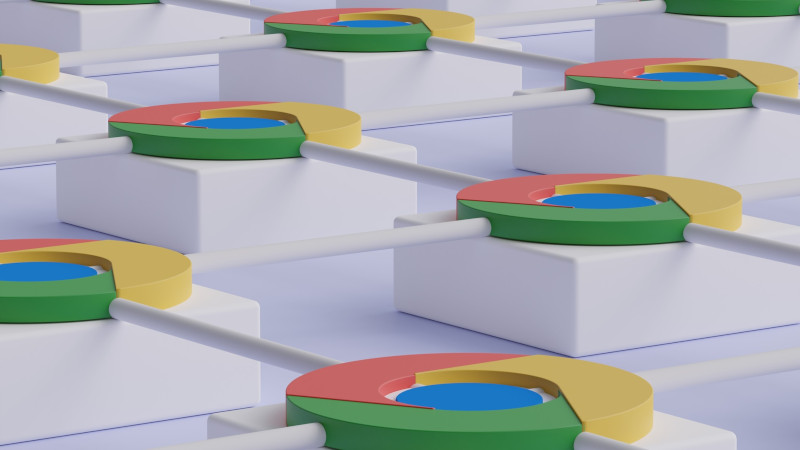Welcome to the ultimate guide on website speed optimization. Users expect quick and seamless experiences, and search engines reward websites that deliver speed. Whether you’re a seasoned webmaster or a newcomer to website optimization, we’ve got you covered.
Understanding Website Speed

Website speed is like how fast a car goes on the internet highway. Imagine you’re driving on a road, and some roads are super smooth, and you can zip along. That’s like a fast website! But some roads are bumpy, and you have to go really slow. That’s like a slow website.
So, understanding website speed is about figuring out how fast or slow a website is. Why is this important? Well, when you visit a website, you don’t want to wait forever for it to load, right? It’s like waiting for your ice cream on a hot day – you want it fast!
Websites are made up of lots of things, like pictures, words, and videos. Sometimes, these things can make a website slow. But there are ways to make them faster!
In this article, you’ll learn about:
- What website speed means – it’s all about how quickly a website shows up on your screen.
- Why do you need to care about it – because nobody likes waiting!
- What makes websites slow – like too many big pictures.
- How you can make them faster – by doing some tricks.
So, buckle up! We’re going on a fun journey to understand website speed.
Website Speed Metrics

Okay, so you know how a car has a speedometer to show how fast it’s going? Well, websites have something like that too, but it’s called “Website Speed Metrics.” It helps us figure out how fast a website is.
Imagine you’re ordering pizza online. You want it to arrive quickly, right? Website speed metrics are like checking if the pizza guy is on a fast scooter or a slow bicycle.
Here are some speed metrics you can use:
- Loading Time: This is like the time it takes for your pizza order to be placed. The faster, the better!
- Page Size: Think of this as how big your pizza is. A smaller pizza (or webpage) loads faster.
- Render Time: It’s like the pizza shop getting your order ready. You want this to be quick!
- TTFB (Time To First Byte): This measures how fast you get the first byte of your pizza (or webpage). Faster is tastier!
These metrics help website owners make sure their websites are super fast. Just like you want your pizza hot and fast, websites should be quick and snappy too.
So, website speed metrics are like your speedometers for the internet world. You use them to make sure websites are as fast as a superhero racing to save the day!
Analyzing Your Website’s Current Speed

Okay, imagine you have a bicycle, and you want to know how fast you can pedal. You’d look at a speedometer, right? Well, for websites, you have something similar to check their speed. It’s like making sure your bike is zooming along and not going too slow.
So, when we talk about “Analyzing Your Website’s Current Speed,” we mean figuring out how fast your website is right now. Just like you’d check your bike’s speed before a race.
Here’s how you do it:
- Tools for Speed Assessment: You use special tools, like a speedometer for websites, to see how fast it loads.
- Interpreting Speed Test Results: It’s like reading the numbers on your bike’s speedometer. You look at the results to understand if our website is fast or slow.
- Identifying Bottlenecks: Imagine if your bike had a broken wheel. That would slow you down, right? You look for things that might be slowing down the website, like too many big pictures or slow servers.
Analyzing your website’s speed is like being a detective. You use tools, read the clues (results), and find out how to make your website go faster. Just like tuning up your bike to win a race!
Mobile Optimization

Imagine if your favorite video game only worked on a big computer and not on your cool smartphone. That would be a bummer, right? Well, that’s why we talk about “Mobile Optimization” for websites. It’s like making sure your website is a superhero that works perfectly on phones too!
Here’s how you do it:
- Mobile-First Design: This means you should build websites while thinking about phones first, not just big computers. It’s like designing a game that’s awesome on both your computer and your phone. Resources: Google’s Guide to Mobile-First Design
- Accelerated Mobile Pages (AMP): Imagine if your game loaded super fast on your phone. That’s AMP – making web pages lightning-quick on mobile devices. Resources: AMP Project
- Responsive Images and Layouts: It’s like making sure your game characters look cool whether you’re playing on a computer or a phone. Make images and layouts flexible, so they fit perfectly on any screen. Resources: Responsive Web Design Basics
Mobile optimization makes your website a superhero that saves the day on phones and computers. It’s all about making sure everyone can enjoy your website, no matter how big or small their screen is!
Image Optimization for Website Speed Optimization
Imagine you’re creating a scrapbook with your favorite photos. You’d want them to look amazing, right? Well, that’s what we do with “Image Optimization” for websites. It’s like making sure the photos on your website are super cool and load really fast.
Here’s how you do it:
- Choosing the Right Image Formats: It’s like picking the right frame for your pictures. Choose formats like JPEG or PNG to make sure your images look great on the web.
- Compressing Images: This is like making sure your photos aren’t too big for the scrapbook. Squeeze them just a little to keep them looking great but not taking forever to load.
- Lazy Loading: Imagine your scrapbook pages only showing up when you flip to them. Lazy loading is like that. Make sure images load only when you’re about to see them, so your website is super fast.
Image optimization is like being a photo wizard. Make sure your website’s pictures are stunning and load as quickly as a lightning bolt, so everyone can enjoy them without waiting!
Code Optimization

You know when you’re playing a video game and it gets slow and glitchy? That’s because the game’s code needs a little magic to run smoothly. Well, “Code Optimization” for websites is just like that – it’s like using magic spells to make websites run super fast and without glitches!
Here’s how it works:
- Minification of CSS and JavaScript: Imagine your game has lots of rules written down. Make those rules shorter and easier for the computer to understand. It’s like speaking a secret language only the computer gets.
- Eliminating Render-Blocking Resources: Sometimes, your game has to wait for things to load before you can play. Make sure everything loads in the right order, so your website pops up quickly, like magic!
- Asynchronous Loading: Think of this like juggling. Make sure your website can do many things at once, like a juggler handling lots of balls. That way, everything happens faster.
Code optimization is like having a magical wizard who cleans up your game’s code so it runs super fast. It’s like waving a wand and making your website work like a charm!
Content Delivery Network (CDN)

Imagine you’re sending a letter to a friend. If you put that letter in a magic mailbox that instantly teleports it to your friend’s house, they’d get it super fast, right? Well, that’s what a “Content Delivery Network” or CDN does for websites. It’s like having magic mailboxes all over the world to make sure your website reaches people lightning-quick!
Here’s how it works:
- What is a CDN? It’s like having copies of your website in many places, kind of like making extra magic letters. When someone wants to see your website, they get it from the closest magic mailbox, which is really fast!
- Setting Up and Configuring a CDN: Think of it as creating more and more magic mailboxes in different places. Set them up to work together smoothly so your website can travel instantly.
- Benefits of Using a CDN: It’s like having a team of speedy messengers who make sure your website arrives at your friend’s house almost as soon as you hit “send.” Your website has become a superstar with fans all over the world!
So, a CDN is like the magic behind the scenes that makes websites load in the blink of an eye. It’s like having a teleportation spell for your web pages!
Hosting and Server Optimization

Imagine your website is a rocket, and the launchpad is like your hosting and server. If the launchpad is slow, the rocket won’t take off quickly. “Hosting and Server Optimization” is like making sure your launchpad is super speedy, so your website can blast off without any delays!
Here’s how it works:
- Choosing the Right Hosting Plan: Think of this like picking the perfect launchpad for your rocket. Choose the best hosting plan that suits your website’s needs, so it’s ready for a fast takeoff.
- Server Caching: It’s like having a super-smart rocket that remembers its last journey. Store some information to make future trips faster.
- Server-Side Optimization Techniques: Imagine we’re like engineers making your rocket’s engine super powerful. Tweak things on the server’s side to make your website zoom!
Hosting and server optimization is like giving your rocket the best launchpad ever. It’s all about making sure your website starts its journey into the internet at top speed, leaving your visitors amazed!
Browser Caching

Picture this: You have a secret hideout, and you’ve hidden your favorite snacks there. You don’t want to fetch them from your kitchen every time you’re hungry, right? Well, “Browser Caching” is like having your snacks in your hideout. It’s a magical trick that makes websites load super quickly!
Here’s how it works:
- How Browser Caching Works: Think of your web browser as a treasure hunter. It collects pieces of your favorite websites (like pictures and scripts) and stores them in its secret cave. So, the next time you visit the same website, your browser already has some things ready, like having your snacks right there in your hideout.
- Configuring Browser Caching: It’s like teaching your treasure hunter how long to keep things in the cave. Set rules to make sure your browser doesn’t keep stuff for too long or too short a time.
- Common Pitfalls to Avoid: Imagine your treasure hunter getting confused about where it put your snacks. Help your browser keep everything organized and not get lost.
Browser caching is like having a magical helper who brings your favorite things to you quickly. It’s like having your snacks ready whenever you’re hungry, without having to go to the kitchen every time!
Content Optimization

Imagine you’re making a delicious sandwich. You want the best ingredients and perfect flavors, right? Well, “Content Optimization” for websites is like creating a mouthwatering sandwich, but with words and pictures. It’s about making your website’s content super tasty for everyone who visits!
Here’s how it works:
- Content Delivery Strategies: Think of this like choosing the best bread for your sandwich. Decide how to present your content – in big, colorful slices or small, easy-to-digest bites.
- Reducing HTTP Requests: It’s like not putting too many ingredients in your sandwich, so it’s not too heavy. Make sure your website doesn’t have too many things that slow it down.
- Combining and Minifying CSS/JS Files: Imagine if your sandwich had fewer layers but still tasted amazing. Simplify the technical stuff on your website, so it’s faster and more enjoyable.
Content optimization is like being a chef who knows all the secret recipes. Make sure your website’s words and pictures are just right, making visitors want to come back for more, just like enjoying a perfect sandwich again and again!
HTTPS and SSL

Imagine you have a diary with all your secrets. You wouldn’t want anyone to read it, right? “HTTPS and SSL” for websites are like having a super strong lock on your diary. It keeps your website safe and your visitors’ information private.
Here’s how it works:
- The Importance of SSL: Think of SSL as your special diary lock. It scrambles the messages between your website and your visitors so that no one else can understand them. It’s like writing your diary in a secret code!
- Implementing HTTPS: HTTPS is like your diary’s secret hiding place. It makes sure your website’s address starts with “https://” instead of just “http://”. This tells everyone that your website is super safe.
- Impact on Website Speed: Just like a lock can slow you down a bit when opening your diary, SSL can make your website a tiny bit slower. But it’s a small price to pay for big security!
So, HTTPS and SSL are like having a superhero bodyguard for your website. They keep everything safe and secure, so your visitors can trust your website with their secrets, just like they trust their diary with their secrets!
User Experience and Speed

Imagine you’re on a roller coaster. It’s thrilling and super fast, right? Well, websites can be like roller coasters too! “User Experience and Speed” is like making sure your website is the coolest, fastest roller coaster in the amusement park of the internet.
Here’s how it works:
- Importance of Smooth User Experience: Think of a smooth roller coaster ride. You don’t want sudden stops or jerky movements. Similarly, websites should be easy to navigate, without any hiccups or delays.
- Optimizing User Interface (UI): Imagine the buttons and signs on a roller coaster. Make sure all the buttons and signs on your website are in the right place and easy to use.
- Reducing Bounce Rate with Speed: Bounce rate is like people leaving the roller coaster line before they get on. If you want to keep visitors to your website, make it fast and exciting.
User experience and speed are like the magic behind an amazing roller coaster ride. You want your website to be so much fun that visitors can’t resist coming back for more excitement!
Monitoring and Maintenance

You know how when you ride a roller coaster, it’s super exciting because it’s fast and smooth? Well, websites can be exciting like that too! “User Experience and Speed” is all about making sure your website is like the coolest roller coaster on the internet.
Here’s how it works:
- Importance of Smooth User Experience: Just like a bumpy ride isn’t fun, a website that’s slow or confusing isn’t fun either. You want to make sure your website is easy to use and super fast, so visitors have a great time.
- Optimizing User Interface (UI): It’s like making sure all the buttons and signs on the roller coaster are in the right places. Arrange everything on your website so it’s easy for people to find what they want.
- Reducing Bounce Rate with Speed: Bounce rate means people leaving your website quickly. You want to keep them having fun on your site, so make it fast and exciting.
User experience and speed are like the magic ingredients that make your website a thrilling adventure, just like a ride on the coolest roller coaster!
FAQ’s
How fast should my website load?
our website should ideally load in 2-3 seconds. Faster loading times provide a better user experience, and search engines like Google prefer faster websites, which can also positively impact your SEO.
What tools can I use to measure website speed?
You can use various tools to measure website speed, including Google PageSpeed Insights, GTmetrix, and Pingdom. These tools analyze your site’s performance and provide suggestions for improvement.
Is mobile optimization essential for speed?
Yes, mobile optimization is crucial. With the majority of users accessing websites on mobile devices, optimizing for mobile ensures a smooth and fast experience for a broader audience.
How can I optimize images without compromising quality?
You can optimize images by choosing the right format (JPEG, PNG, etc.), compressing them, and using lazy loading. These techniques reduce image size while maintaining good quality.
What are the most common speed bottlenecks?
Common speed bottlenecks include large images, unoptimized code, excessive HTTP requests, and not using a Content Delivery Network (CDN).
Does speed optimization affect SEO rankings?
Yes, website speed affects SEO rankings. Search engines like Google consider page speed as a ranking factor. Faster websites often rank higher in search results.
Conclusion
The journey through the world of website speed optimization has been an enlightening one. We’ve explored various facets of this critical topic, from understanding the importance of speed to diving deep into the technical aspects of optimization. Here’s a quick recap of what we’ve learned:
- Website Speed Matters: Began by understanding why website speed is crucial. It’s not just about convenience; it impacts user experience, SEO rankings, and even your website’s success.
- Speed Metrics: Explored the metrics used to measure website speed, like loading time, page size, render time, and Time To First Byte (TTFB). These metrics are the tools that help us gauge and improve website speed.
- Optimization Techniques: You’ve delved into various optimization techniques, including mobile optimization, image optimization, code optimization, and the use of Content Delivery Networks (CDNs). These strategies empower us to enhance website performance effectively.
- Security and User Experience: You learned that security, as represented by HTTPS and SSL, plays a crucial role in both protecting users and improving website speed. Furthermore, a seamless user experience, coupled with speed, keeps visitors engaged and prevents them from bouncing away.
As we conclude, remember that the quest for a fast and efficient website is ongoing. Regular monitoring, maintenance, and adaptation to changing technologies will keep your site running like a well-oiled machine. By implementing the strategies and insights gained from this guide, you’re well on your way to delivering a superior online experience for your audience. So, go ahead, apply these principles, and watch your website soar to new heights of speed and success!




